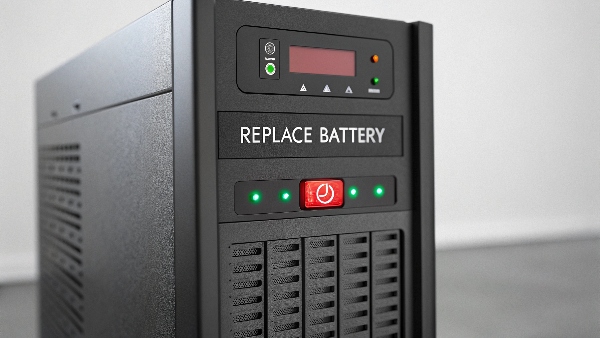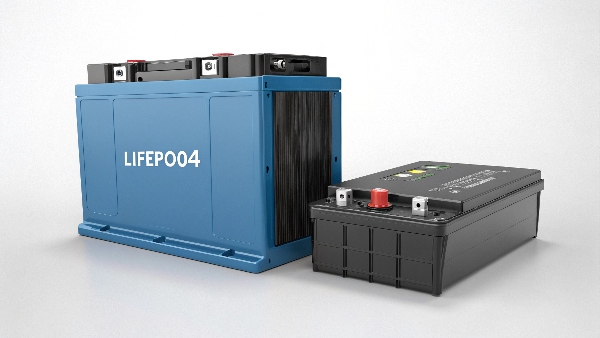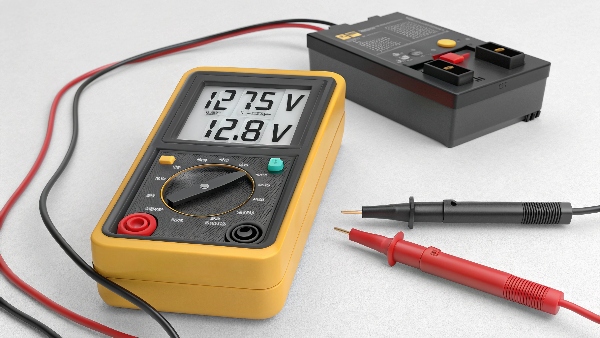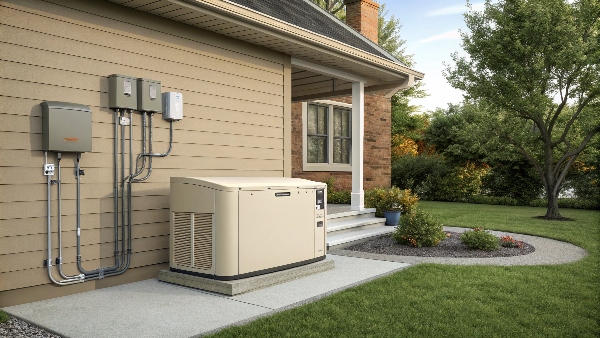Power flickers, your UPS fails, and critical data is suddenly lost. Worried your UPS battery won't protect you when needed? Don't wait until it's too late for your operations.
A dead UPS battery often shows no output when mains power fails, emits frequent beeping alarms, displays a "replace battery" indicator light, or provides a drastically reduced runtime on battery. Regular self-tests can help confirm its demise before an actual outage occurs.

Transition Paragraph:
As an experienced hand at Daopulse for the past ten years, I’ve seen many clients face the sudden, frustrating reality of a failed UPS. The good news is, much like how UPS connection is very simple, just connect the power cord to the load, identifying a dead battery often involves clear signs. We design our OEM/ODM systems, compliant with CE and RoHS standards, to be as user-friendly as possible, right down to maintenance. But before you even think about replacing it, let's understand the tell-tale symptoms of a dying or dead battery and explore some related critical power questions that often come up.
LiFePO4 Battery in UPS: A Game Changer for Longevity?
Tired of frequent lead-acid battery replacements in your UPS? The cost, downtime, and hassle add up quickly. Are you looking for a longer-lasting, more reliable UPS battery solution?
Yes, LiFePO4 (Lithium Iron Phosphate) batteries in UPS systems are a significant upgrade. They can extend operational lifespan, often lasting 2-3 times longer than traditional lead-acid batteries, along with providing better performance and enhanced safety features.

Dive deeper Paragraph:
At Daopulse, we're increasingly incorporating LiFePO4 technology into our UPS designs, and for good reason. LiFePO4 is a specific type of lithium-ion battery known for its stability and long life. Compared to traditional Valve Regulated Lead-Acid (VRLA) batteries commonly found in older UPS systems, the advantages are compelling. First, the cycle life is much greater; LiFePO4 batteries can handle thousands of charge-discharge cycles compared to a few hundred for lead-acid. This translates to a longer service life, reducing replacement frequency – a big win for Procurement Managers like Mr. Li who are conscious of Total Cost of Ownership (TCO). Second, they offer better thermal stability, making them safer and more tolerant of higher ambient temperatures, which can quickly degrade lead-acid batteries. They are also significantly lighter and more compact for the same energy capacity, allowing for smaller UPS footprints or more runtime in the same space. Their charging efficiency is also higher. While the initial investment for a LiFePO4 UPS might be higher, the extended lifespan and reduced maintenance often result in lower overall costs and greater reliability, especially for critical applications in data centers or healthcare. The integrated Battery Management System (BMS) in our lithium units also provides superior monitoring and protection.
What is the normal average lifespan of a UPS?
You know UPS units don't last forever, just like any electronic device. You're wondering when you might need to budget for a replacement for the entire unit, not just the battery.
The UPS unit itself typically has an average lifespan of 5-10 years. This depends on its build quality and operating environment. Batteries, especially lead-acid types, need replacing much more frequently, usually every 3-5 years.

Dive deeper Paragraph:
It's important to distinguish between the lifespan of the UPS electronics and the lifespan of its batteries. The UPS chassis, with its inverter, charger, and control logic, can last quite a while if well-maintained. We at Daopulse use high-quality components in our OEM/ODM units to maximize this. Factors influencing the UPS unit's longevity include the quality of internal components like capacitors and fans, which can wear out. The operating environment plays a huge role; high temperatures, excessive dust, or humidity can shorten its life. Consistently running the UPS at its maximum load capacity can also stress components over time. Regular, simple maintenance like keeping vents clear can help. For the batteries, as discussed, lead-acid types typically last 3-5 years. Our lithium battery UPS solutions offer a much longer battery service life, often 8-10 years or more, aligning better with the electronics' lifespan. Signs that the entire UPS unit might be failing (and not just the battery) include unusual noises like buzzing or humming when it wasn't there before, frequent self-test failures even with a new battery, or the unit overheating. System Integrators often plan for UPS refresh cycles based on these expected lifespans to ensure continuous protection for their clients.
What is a good voltage for a UPS battery?
You're thinking of checking your UPS battery voltage as a quick health indicator. But what reading actually tells you if the battery is healthy and fully charged, versus one that's failing?
For a common 12V lead-acid UPS battery, a good, fully charged open circuit voltage is around 12.6 to 12.8 Volts. If it reads consistently below 12V, it often indicates a problem or deep discharge.

Dive deeper Paragraph:
Voltage is a useful, though not sole, indicator of battery health, particularly for lead-acid batteries1. Most smaller to mid-sized UPS systems use one or more 12V sealed lead-acid (SLA) batteries. When the UPS is plugged in and the battery is fully charged and "floating," the charging voltage applied by the UPS will be higher, typically around 13.5V to 13.8V per 12V battery. If you disconnect a fully charged lead-acid battery and let it rest for a few hours (its open circuit voltage), a healthy one should read between 12.6V and 12.8V. If it's much below 12.4V after a full charge cycle and rest, it's losing capacity. If it drops below 12V, it's significantly discharged or likely failing. During a power outage, as the battery discharges, its voltage will gradually drop. The UPS has a low-voltage cutoff to protect the battery from excessive discharge. For lithium-ion batteries, voltages differ. A LiFePO4 cell has a nominal voltage of about 3.2V, so a "12V" LiFePO4 pack (usually 4 cells in series) would have a nominal voltage around 12.8V, with a full charge voltage around 14.4V-14.6V, and the BMS handles precise voltage management2. At Dapulse, our patented technology and rigorous testing ensure our batteries meet their voltage specifications, providing reliable backup.
How can anyone connect a UPS to a house?
You've experienced a power outage and thought, "Can I use a UPS to power my whole house?" The idea of keeping all your lights and appliances running sounds great, but it can be quite complex.
Connecting a standard plug-in UPS to power an entire house is generally not feasible or safe. Whole-house backup requires specialized, professionally installed systems like large-capacity inverters or standby generators with automatic transfer switches.

Dive deeper Paragraph:
While it's a tempting thought, especially during an extended outage, typical UPS systems, like the 1500VA to 6kVA units we manufacture at Daopulse, are not designed for whole-house backup. There are several reasons for this. First, capacity: a standard UPS has a much lower power output (VA/Watts) than what's needed to run multiple household appliances like refrigerators, air conditioners, ovens, or even many lights simultaneously. Second, battery runtime: the batteries in a typical UPS are sized to provide power for minutes to allow safe shutdown of IT equipment, not hours for an entire house. Powering a whole house would require an enormous and costly battery bank. Third, safety and electrical codes: improperly connecting a UPS to house wiring can be dangerous. It could backfeed power onto the grid, endangering utility workers, or create fire hazards. For true whole-house backup, you need a system designed for that purpose. This usually involves a large inverter/charger, a substantial battery bank (often 48V or higher voltage systems for efficiency), and critically, an Automatic Transfer Switch (ATS). The ATS safely disconnects your house from the grid during an outage and connects it to the backup source, then reverses the process when grid power returns. This kind of installation must be done by a qualified electrician. Our UPS solutions excel at protecting critical individual devices or specific circuits.
Conclusion
A dead UPS battery shows clear signs like no output or short runtime. LiFePO4 offers longer life. UPS units last 5-10 years; batteries less. Check voltage, but know its limits.

